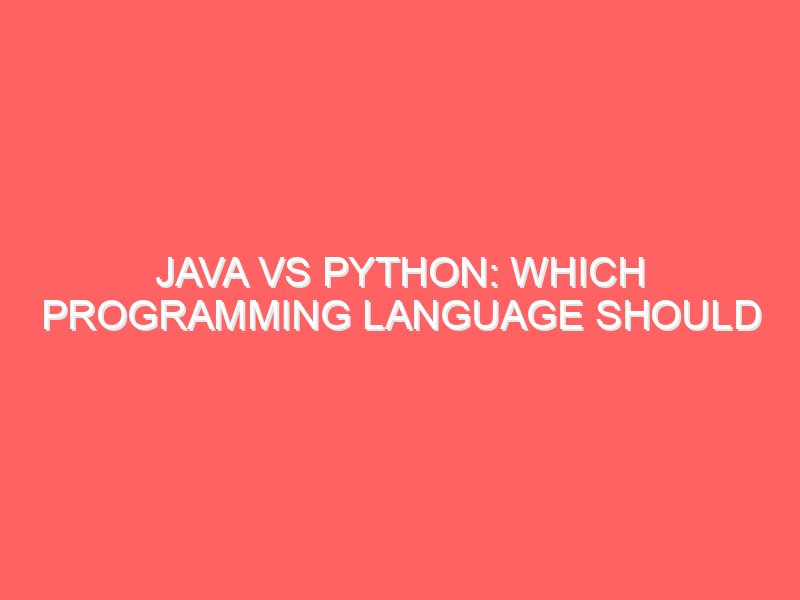Introduction: The Rise of AI in Creative Industries
Artificial intelligence (AI) has rapidly emerged as a transformative force across various sectors, particularly in creative industries. By integrating AI tools into writing, visual arts, and music, creators are starting to experience unprecedented enhancements in their creative processes. This rise of AI in content creation signifies not only a technological shift but also a change in how artists, writers, and musicians conceptualize and implement their craft.
In recent years, the proliferation of AI-driven tools has opened up new avenues for artistic expression and creativity. For writers, AI applications can analyze vast amounts of text, suggesting styles, structures, and even plot developments that align with current trends. This not only aids those struggling with writer’s block but also inspires new forms of storytelling. The ability of AI to learn from existing works allows it to make informed recommendations that help writers refine their narratives, ultimately influencing the quality of work produced.
Furthermore, in visual arts, AI is making waves through generative algorithms that can produce stunning imagery, from abstract paintings to realistic depictions. Artists are increasingly collaborating with AI systems, leveraging their capabilities to explore unconventional aesthetics and concepts. This merging of human creativity and machine intelligence is reshaping the boundaries of what can be created, leading to a hybrid form of artistry that blends traditional techniques with digital innovation.
In the realm of music, AI tools are being utilized to compose, arrange, and even perform pieces across various genres. Musicians are harnessing the potential of AI to generate original melodies, harmonies, and rhythms, leading to a dynamic evolution of sound. With AI’s involvement, the landscape of music production is changing, providing artists with the tools needed to innovate without limits.
As this technological revolution unfolds, the impact of AI on the creative process continues to deepen. It is essential to explore the diverse applications and implications of these tools, paving the way for a future where the line between human creativity and machine learning becomes increasingly blurred.
AI in Writing: Transforming the Written Word
Artificial Intelligence (AI) is increasingly becoming a pivotal force in the field of writing, offering a plethora of tools and technologies that streamline and enhance the writing process. One of the most significant applications of AI in this domain is automated content generation. Utilizing machine learning algorithms, writers can produce high-quality articles, blog posts, and marketing materials in a fraction of the time it would typically take. These AI-driven solutions analyze vast datasets to generate relevant, coherent, and contextually appropriate content, making them invaluable for content creators across various industries.
In addition to content generation, AI tools are also focused on improving grammar and stylistic elements. Programs such as Grammarly or ProWritingAid employ advanced algorithms to critique writing style, pinpoint grammatical errors, and offer suggestions for enhancing clarity and engagement. This capability empowers writers by providing immediate feedback, allowing them to refine their work and maintain a professional standard. By significantly reducing the time spent on revisions, these tools have transformed drafting processes and enabled writers to focus more on creativity and ideation.
Furthermore, predictive writing assistants are emerging as powerful allies in overcoming writer’s block and fostering creativity. These intelligent systems can suggest topics, help brainstorm ideas, and even complete sentences based on the user’s input. Such functionalities aid in alleviating the pressure of starting from scratch, thereby improving productivity and enabling writers to explore new narratives and concepts without hesitation.
The implications of these advancements extend to journalism, blogging, and the literary arts, where AI is shaping how stories are told and consumed. While some might argue that the rise of AI could diminish the essence of human creativity, it is clear that these tools offer tremendous opportunities to enhance the art of writing. As AI continues to evolve, its integration into writing processes looks set to revolutionize not only content creation but also the relationship writers have with their craft.
AI and Visual Arts: Redefining Creativity
The advent of artificial intelligence (AI) in visual arts has marked a significant transformation in the way art is conceived and produced. AI algorithms, capable of processing vast datasets, have begun to generate digital paintings, illustrations, and creative designs autonomously. By leveraging neural networks and machine learning techniques, these tools can replicate artistic styles, create original compositions, and even assist artists in their creative journeys. This intersection of technology and creativity is not merely augmenting traditional practices; it is fundamentally redefining the landscape of visual arts.
One notable application of AI in this realm is the generation of digital paintings. Programs such as DeepArt and Artbreeder utilize algorithms to analyze existing artworks, pinpoint stylistic elements, and apply them to create new pieces. This capability poses intriguing questions about originality and authorship in art. When a machine creates an image that mirrors the techniques of iconic artists, is the resulting artwork genuinely original, or is it merely a reconfiguration of existing styles? This debate brings forth the complex relationship between human and machine creativity, challenging the notion of what it means to be an artist in the contemporary art world.
Furthermore, AI-driven tools are facilitating design processes, allowing artists to experiment swiftly with various concepts and styles, thereby enhancing efficiency and creativity. For instance, designers can use AI to generate multiple iterations of a graphic concept, sparking new ideas and directions previously unthinkable. While these advancements can streamline artistic processes, they also evoke concerns regarding the authenticity of work created under AI influence. As AI continues to infiltrate the visual arts, it becomes increasingly vital for artists and audiences alike to consider how these tools reshape their understanding of creativity and expression.
In conclusion, as AI tools are shaping creative industries, they are redefining not only the methods of artistic creation but also the fundamental definitions of art and originality. This evolution merits a thoughtful examination of its implications for artists, consumers, and the future of visual arts.
AI in Music: Composing the Future
The advent of artificial intelligence (AI) has significantly transformed various aspects of the music industry, facilitating an innovative approach to music composition and production. Today, AI-generated music is becoming an integral part of the creative process, assisting composers by providing inspiration and streamlining workflows. This technology has enabled musicians to explore uncharted territories in their compositions, thereby expanding creative possibilities.
AI tools designed for music generation can analyze vast datasets, learning patterns from existing compositions across genres. This capability allows AI to produce original pieces that draw upon a multitude of influences, presenting composers with new ideas and styles. AI-generated music is not just limited to background scores or experimental pieces; it has found its way into mainstream music, illustrating its potential impact on the industry.
Several notable applications of AI in music production have emerged. For instance, genre classification tools utilize machine learning algorithms to categorize music into specific genres, enhancing the way listeners discover new tracks. These technologies consider various elements including tempo, rhythm, instrumentation, and lyrical content. Moreover, music recommendation systems powered by AI tailor listening experiences to individual preferences, thereby fostering a more personalized interaction with music.
The collaborative efforts between musicians and AI programs are noteworthy, as they exemplify the synergy that can occur between human creativity and artificial intelligence. Such collaborations have led to the development of unique compositions that may not have emerged through traditional methods alone. As AI continues to evolve, its role in shaping the future of music is expected to grow, marking a significant shift in how music is created, produced, and consumed.
In conclusion, AI is undeniably revolutionizing writing, art, and music by reshaping how creators interact with their craft. The integration of AI in music not only augments the creative process but also offers unprecedented opportunities for innovation, affirming its potential to redefine the landscape of the music industry.
The Benefits of AI in Content Creation
The adoption of AI tools in content creation has transformed the landscape of creative industries, yielding a myriad of benefits that cater to both established and emerging creators. One of the primary advantages is the significant enhancement in efficiency. AI technologies automate various tasks, reducing the time it takes to produce written content, artworks, or musical compositions. This automation allows creators to focus more on conceptual development and the creative process, rather than getting bogged down by mundane tasks such as formatting or basic research.
Another substantial benefit is the increased accessibility these tools provide for emerging creators. AI-driven platforms democratize access to sophisticated content creation tools that were once exclusive to professionals. This shift enables individuals with varying levels of expertise to experiment with their artistic endeavors, fostering a more inclusive environment for creativity. As a result, a more diverse range of voices and perspectives can contribute to the ever-evolving landscape of writing, art, and music.
Collaboration stands as another critical advantage of AI in creative fields. AI tools facilitate enhanced collaboration among artists, writers, and musicians by providing real-time feedback, generating ideas, and enabling shared workspace environments. This interconnectedness fosters innovative partnerships and synergies that were previously challenging to achieve, leading to richer and more diverse creative outputs.
Furthermore, the ability of AI to provide personalized content is revolutionizing the way creators engage with their audiences. By analyzing user preferences and behaviors, AI tools can assist creators in tailoring their works to meet specific needs and expectations, thereby increasing viewer engagement and satisfaction. This personalization aspect not only optimizes content reach but also encourages ongoing experimentation and innovation across various creative avenues. Overall, the benefits of AI in content creation significantly enhance both individual artistic expression and collaborative potential in the thriving realm of the arts.
Challenges and Ethical Considerations
The integration of AI in content creation brings forth a variety of challenges and ethical considerations that must be addressed. One major issue is the authenticity of AI-generated works. As artificial intelligence systems become increasingly adept at producing text, images, and music, questions surrounding the originality and ownership of these creations arise. Traditional notions of authorship are challenged as AI blurs the lines between human and machine-generated content, leading to debates over whether AI can truly create ‘art’ or if it merely replicates existing styles and formats.
Another significant concern is copyright. The emergence of AI tools that can generate content similar to that produced by human creators raises questions about intellectual property rights. If an AI system generates a piece of music or a painting, who holds the rights to that creation? These uncertainties necessitate a re-examination of existing copyright laws and may require new frameworks that specifically address the nature of AI-generated work. The balance between encouraging innovation and protecting the rights of creative individuals is a complex landscape that requires careful consideration.
Furthermore, the rise of AI in creative industries poses potential job displacement risks. As automation increases, tasks traditionally performed by human writers, artists, and musicians may be assumed by AI systems. This shift could lead to significant changes in employment dynamics within the creative sector, prompting concerns about the future of work in industries that thrive on human creativity and expression. As a response to these challenges, there is a pressing need for regulation and responsible usage of AI tools in content creation. Developing industry standards and ethical guidelines will be crucial to ensure that the benefits of AI are harnessed while minimizing harm to human creators and the integrity of the creative process.
Real-World Applications of AI in Creative Industries
The integration of AI tools in creative industries is driving significant advancements across various sectors, successfully transforming traditional approaches to writing, art, and music production. Numerous case studies underscore the effectiveness of these technologies in enhancing creative processes and outputs. In writing, tools like OpenAI’s GPT-4 have been increasingly adopted by content creators and marketers. These AI-driven platforms assist in generating engaging articles, creating compelling ad copy, and even developing narrative structures for novels. For instance, platforms such as Copy.ai and Jasper are widely used by professionals to streamline the content creation process, allowing them to focus on refining their voice while AI handles the bulk of the writing.
In the realm of visual arts, AI applications like DeepArt and RunwayML are revolutionizing how artists produce and develop their works. Artists utilize these tools to create stunning visuals that amplify their unique styles. By employing neural networks, these AI platforms can analyze existing artworks and generate new pieces that blend traditional techniques with modern aesthetics. This collaboration between human creativity and AI capabilities is giving rise to innovative art forms, thus challenging the very definition of authorship and originality in art.
The music industry is similarly impacted by the advent of AI, with companies like Amper Music and AIVA leading the charge in automated music composition. These intelligent software applications empower musicians and producers by providing them with a foundation on which to build their compositions. By leveraging AI’s ability to analyze trends and structures in existing songs, these tools facilitate the generation of new musical ideas rapidly. By integrating AI technologies into their workflow, artists can enhance their creative capacity, push boundaries, and explore uncharted artistic territories.
Collectively, these real-world applications demonstrate how AI tools are shaping creative industries, opening doors to unprecedented possibilities that augment human creativity. Through successful implementations, organizations and individuals are not only redefining their artistic outputs but also reinforcing the transformative potential of AI in content creation.
Future Trends: The Next Frontier for AI in Content Creation
The future of AI in content creation is poised to offer transformative trends that have the potential to redefine artistic expression across various disciplines, including writing, art, and music. As advancements in AI algorithms continue to evolve, we anticipate significant improvements in their capabilities, fostering creative endeavors that were previously unimaginable. Enhanced machine learning techniques will empower AI systems to better understand human creativity, enabling them to produce content that resonates on a deeper emotional level with audiences.
One of the most promising developments is the greater integration of AI tools into creative workflows. This integration will not only streamline processes but also enhance collaboration between human creators and AI applications. For instance, writers may employ AI to generate ideas, suggest edits, or even craft entire narratives, thereby allowing them to focus on higher-level creative decisions. Similarly, in the realm of visual arts, AI could assist artists by proposing unique design elements or even generating artistic pieces that challenge traditional notions of creativity.
Moreover, we might witness the emergence of entirely new forms of artistic expression facilitated by AI technologies. This includes the potential for AI to create hybrid art forms that blend various disciplines—resulting in innovative works that could combine elements of writing, visual artistry, and music. Such creations could redefine audience engagement, as these novel expressions beckon viewers to interact with content in unprecedented ways. As these trends unfold, it will be critical for creators to explore how AI can enhance their practices while maintaining the authenticity of human artistry.
In conclusion, the next frontier for AI in content creation looks promising, with the potential to revolutionize how we approach writing, art, and music. As the technology progresses, its impact on creative industries will only deepen, encouraging artists to embrace AI as a collaborative partner in their creative journeys.
Conclusion: Embracing AI for a Creative Renaissance
Throughout this discussion, we have explored the profound impact that AI has on content creation, particularly in the realms of writing, art, and music. AI tools have emerged as transformative forces, allowing creators to push the boundaries of their imagination while streamlining the production process. This revolutionary technology is not merely a method for automating creativity; instead, it serves as a resource that can enhance human artistic expression. By analyzing vast datasets, AI can generate innovative ideas and provide insights that may not have been readily apparent to the creator.
Additionally, our examination of how AI tools are shaping creative industries reveals that they encourage collaboration between human ingenuity and artificial intelligence. By leveraging these advanced technologies, writers and artists can explore new styles and techniques that blend traditional methods with modern enhancements. In this collaborative environment, the role of the human creator evolves, with AI acting as a supportive catalyst for artistic exploration rather than a replacement for human talent.
In embracing AI for content creation, artists and writers alike can find inspiration and efficiency in their work. AI serves as an invaluable asset, enabling individuals to explore ideas beyond the constraints of conventional practices. As we look to the future, it is essential for creators to adapt and harness the capabilities of these tools, recognizing their potential to not only enhance productivity but also enrich the creative process. By doing so, we can usher in a new era that celebrates the fusion of technology and creativity, ultimately contributing to a vibrant and diverse artistic landscape.
- Name: Mohit Anand
- Phone Number: +91-9835131568(Sumit Singh)
- Email ID: teamemancipation@gmail.com
- Our Platforms:
- Digilearn Cloud
- EEPL Test
- Live Emancipation
- Follow Us on Social Media:
- Instagram – EEPL Classroom
- Facebook – EEPL Classroom
- Go back to google



